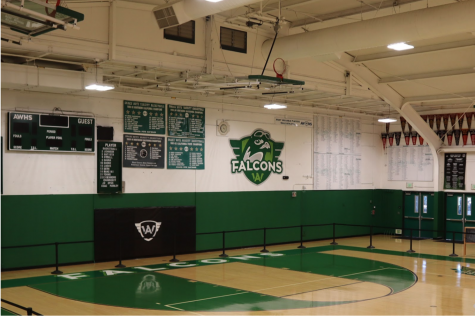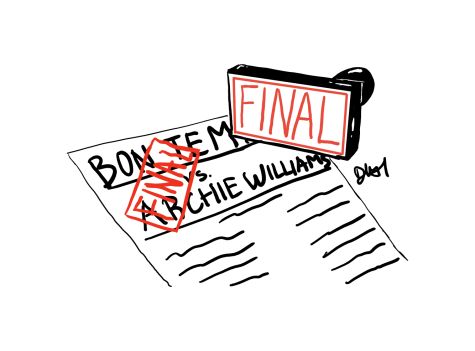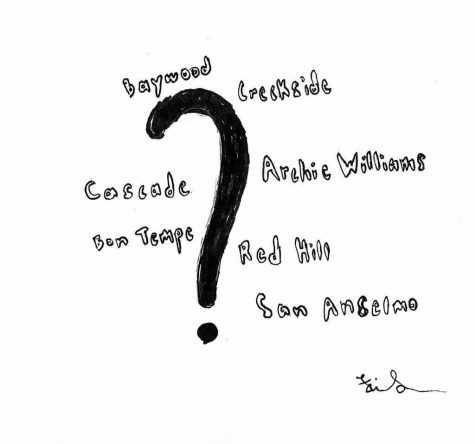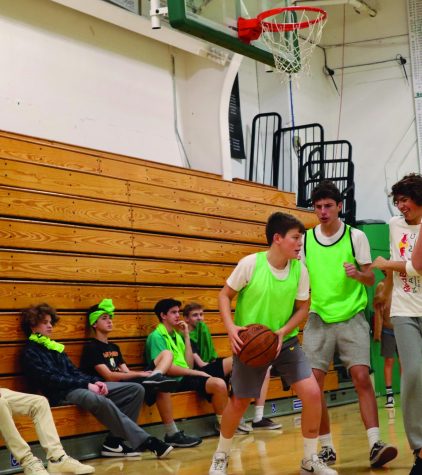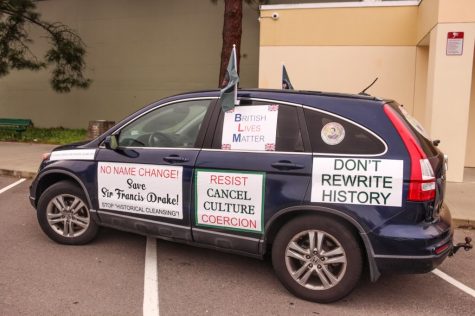Drug abuse at core of high school interaction
Original Illustration by Pace Buchan, representative of rising amounts of teen drug use and abuse.
The use (and often abuse) of substances during adolescent years has been a social norm for decades. Movies all the way back to the fifties show teens partying with a drink in hand or casually smoking a cigarette.
A societal expectation has developed that teens at some point will experiment with this kind of risky behavior through their “rebellious years” and to “find themselves.” Drinking and smoking started becoming associated with assisting in youth socializing and becoming a part of the “crowd” as it began being glorified in media. A specific pinpoint to when drugs started being deemed as “cool” was the introduction of cigarette ads. But since then, music, movies, and just increase in availability due to legalization has made this societal standard become more prevalent.
For the longest time, society as a whole, including many parents of teens, considered this harmless and even looked at it with minimal concern while reminiscing about their teenage years. But the already blurred line of teen drug use being a part of high school socializing being acceptable to a certain extent was completely dissolved in recent years. This change can be attributed to the introduction of harder and stronger drugs to high school students to use recreationally.
Recreational use began gradually transitioning from being an occasional occurrence for teens at events like parties to becoming the core of socializing for high schoolers and into college years. It became common for students to do drugs and be high at school. Many factors contributed to why this has occurred, including the increase of availability of drugs that became easier in the wake of substances being able to be advertised and sold online due to legalization.
Although school administrations in Marin have taken various forms of action in preventing this, including having campus supervisors coming into the bathrooms during breaks, the introduction of devices that are purposely inconspicuous (i.e. Juul) makes it easier for students to slip them past teachers. Instead of kids making plans after school to get food or do homework, they instead find spots to smoke where they know the risk of being seen is minimal.
Legalization and corporatization of marijuana also changed much of the public’s perspective of the drug. As marijuana became legal, it became an investment opportunity for wealthy corporations to profit off of peoples’ addictions. Legalization allows the drug to be sold in public markets, making the availability of teens getting their hands on it much easier, and in their perspective, “safer.”
There is a fair assumption that if something is legal it cannot be harmful, which makes many young people choose marijuana over alcohol as a “healthy alternative” to use at social outings. But the potency of marijuana increased significantly since it first became popular in the 1960s. During the time of Woodstock, recreational marijuana was about three to five percent THC. But since then, marijuana THC jumped to 25-35 percent.
This compound in marijuana is not only the part that makes users high, but it is also what puts them at risk of becoming addicted. The combination of easier access through legalization as well as increased potency is what leads to students using more often and potentially being at risk of addiction.
Over the years, teen drug use has gone from social to dependent, a dangerous precedent. Stepping back and looking at the effects of drugs on teens should make us rethink how society is portraying them. It is of high concern that many teens feel they don’t have the ability to interact with others without the interference of drugs.
Your donation will support the student journalists of Archie Williams High School. Your contribution will allow us to purchase equipment and cover our annual website hosting costs. Each donation will receive a magazine subscription for a year (6 copies a year), and become a part of the important work our publication is doing.
$35 -- Subscription to the magazine
$50 -- Silver Sponsorship
$75 -- Gold Sponsorship
$100 -- Platinum Sponsorship



